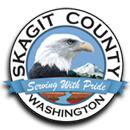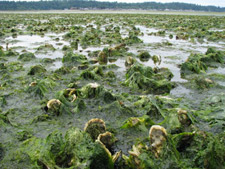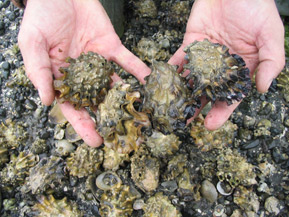The
Clean Water Program: History
In
1994, as a result of bacterial pollution, the Washington
State Health Department closed parts of Samish Bay
to recreational and commercial shellfish harvesting.
The Bay was so polluted that shellfish harvested from
this area were poisonous to people. To remedy this,
the county was required to come up with a program
that would reduce contamination. In 1995, the Clean
Water (Shellfish Protection) District (CWD) was formed.
The CWD helped clean up failing sewage systems in
Edison and Blanchard which were contributing to the
Bay's pollution.
Curing
Faulty Septic Systems
By 1998, there seemed to be an adequate amount of
septic cleanup in Blanchard and Edison to reopen parts
of Samish Bay to shellfish harvesting. For the next
few years, the CWD took a back seat waiting to fix
the next big event that occurred with little funding
to fuel its survival.
Skagit
County's Water Monitoring Efforts
From 1999-2005, Skagit County monitored water quality
through the Baseline and Samish Bay Watershed Quality
Monitoring Projects. This monitoring revealed continuing
fecal coliform pollution in the Samish Basin and elsewhere
in the County. Fecal coliform bacteria indicate the
probable presence of organisms which can cause diseases
such as typhoid fever, viral and bacterial gastroenteritis,
and hepatitis A. Many watercourses also failed to
meet state standards for other parameters such as
dissolved oxygen and temperature.
Enter
Skagit County's Clean Water Program
In 2005, as a part of the CWD, Skagit County created
the Clean Water Program (CWP). Its goal: to address
and deal with non-point pollution and enhance Skagit
County's water quality with special attention paid
to reducing fecal coliform pollution, educating the
public, controlling storm water pollution, and developing
a water monitoring plan.
Background
|








